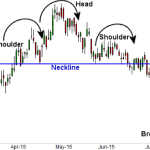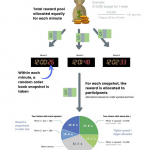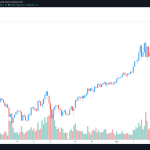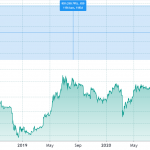You Might Not Get Any Smarter in 2018, But AI Will Experts from IBM, GitHub, Oracle, Salesforce, Tableau, and others tell us what’s next in artificial intelligence and data-driven computing. Experts from IBM, GitHub, Oracle, Salesforce, Tableau, and others tell us what’s next in artificial intelligence and data-driven computing.
Last year around this time, we observed that artificial intelligence (AI), cloud architectures, and Big Data technology were converging to transform the way we work and play. That trend has only become more pronounced this year, as companies embrace data-driven strategies in the cloud and start to bake intelligence into their experiences.
From conversational AI such as virtual assistants to new predictive features woven into user experiences, cloud-based technology keeps getting smarter. In 2018, we’ll see new architectures emerge as cloud infrastructure, data tech, and AI techniques like machine learning evolve. We asked execs and experts from IBM, Oracle, MapR, Salesforce, and more to predict the biggest innovations and trends to emerge in the coming year.

1Building Safer AI
“Artificial intelligence is increasingly used for applications, like drug discovery or the connected car, that can have a detrimental impact to human life if the incorrect decision is made. Many AI frameworks are a black box with many layers of computation getting built within as the framework learns from various data points. Detecting exactly what caused the final incorrect decision leading to a serious problem is something enterprises will start to look at in 2018. This might be a result of a serious AI blunder, which is unfortunately bound to happen eventually. Auditing and tracking every input and every score that a framework produces will help with detecting the human-written code that ultimately caused the problem.”
—Nima Negahban, CTO and co-founder of Kinetica

2Predictive Intelligence
“Looking ahead to 2018, analytics will be revolutionized by predictive intelligence that will invigorate every stage of the decision-making process with actionable insights. With predictive intelligence like AI and machine learning driving better decisions, analytics is no longer a reflection tool; it’s a guidance system that will shape winning behaviors. Furthermore, we should aspire to an intelligent analytics experience for an entire company or organization—for sales, service, marketing, and communities—in order to provide true global visibility. This is the analytics of the future.”
—Ketan Karkhanis, GM & SVP of Salesforce Analytics

3Chatbots and Conversational Interfaces
“We’ve seen the beginning of a fundamental shift as companies start implementing AI to streamline and improve our daily lives. Conversational interfaces or chatbots have quickly become a daily part of consumer life for many through products such as Amazon’s Alexa and and Apple’s Siri, [which] significantly reduce the friction and time spent on basic activities.
This trend will accelerate in 2018. Gartner estimates that by 2019, 40 percent of enterprises will use chatbots to facilitate business processes using natural language interactions. They further predict that chatbot built-in functionality will replace 30 percent of all human-to-human customer facing interactions by 2021.
“2018 will be the year that chatbots explode in the business software world to improve customer experiences, give users more time to focus on larger business goals, and ultimately improve the relationships customers have with businesses whose products they use. With Amazon just launching a business-focused Alexa platform and Microsoft launching B2B chatbot building blocks, 2018 will start a wave of new chat-based interfaces to replace lengthy marketing forms, help sales reps qualify leads faster, and dramatically simplify customer service processes.”—Anthony Smith, CEO of Insightly

4The Promise of Natural Language Processing
“Gartner predicts that by 2020, 50 percent of analytical queries will be generated via search, natural language processing (NLP), or voice. From Siri to Alexa, people’s expectations about how they can and want to engage with technology is changing, and using natural language has become commonplace in our everyday lives. In the world of analytics, NLP will empower people to ask more nuanced questions of data and receive relevant answers that lead to better insights and decisions. This will broaden the use of analytics across organizations by dramatically simplifying the ways people interact with data.”—Francois Ajenstat, Chief Product Officer at Tableau

5A Multi-Cloud World
“Adoption of multiple clouds is becoming and will continue to be more prevalent, creating an even more complex situation for security and compliance teams who struggle to keep up with development. Despite the additional complexity, organizations will make the move to multi-cloud to satisfy availability and disaster recovery requirements, to satisfy the technology preferences of development teams, or as a tactic to manage growing cloud expenses. Additionally, companies are looking at cloud-agnosticmicroservices and secondary cloud services for their future uses.”—Tim Prendergast, CEO of Evident.io

6Cloud Wars Rage On
“Microsoft’s relentless march to take back its customers from Amazon will continue as it works to win over the hearts and minds of former Microsoft faithful. Diane Greene is transforming Google into an enterprise organization; Google Cloud has taken down software companies and digital natives; next it will overtake some Fortune 500 players. IBM will continue to languish, but I suspect we’ll see a dark horse in the race from one of the Chinese players, like Alibaba Cloud, which I expect will make a play for the US market.”—Peter Guagenti, CMO of Mesosphere

7ML Goes From in Vogue to in Production
“Increasingly, machine learning will be seen as a normal part of business rather than being unusual, especially as more enterprises begin to reap the benefits of machine learning systems in terms of real business value. AI will continue to get a lot of buzz, but it will be a much broader set of machine learning approaches that deliver valuable insights across many enterprises in different sectors. People are likely to see that the most successful systems occur where people focus more on the problem than the tool. They will recognize how important it is to frame the question correctly, have realistic goals, have access to appropriate data at scale, and have a realistic plan to convert machine learning results into action.”
—MapR Chief Application Architect Ted Dunning

8Data Innovations Reach a Tipping Point
“Microservices architectures built on container and serverless computinghave revolutionized the speed at which apps can be built and how they connect into the most competitive technologies today: AI, blockchain, and machine learning. In 2018, we will see the adoption of these technologies reach a tipping point. They will move from early adoption to becoming the defacto standard for complex and production-ready apps across industries and companies of all sizes. The result will be an uptick in the development of mature apps that can span and operate across multiple systems, teams and data streams.”—Jason McGee, IBM Fellow, VP and CTO, IBM Cloud

9Big Data Systems as the Center of Gravity
“In the past, Big Data and the projects built around it have been isolated, in many cases special projects or experiments that at best complemented traditional systems. Now, Big Data is becoming an essential asset, and enterprises are transforming into data-driven concerns. This transformation naturally leads to big data systems becoming the center of gravity for enterprises, in terms of data size, storage, and access as well as operations and analytics. As a result, more businesses will be looking for ways to build a global data fabric that breaks down silos to give comprehensive access to data from many sources and to computation for truly multi-tenant systems.”—MapR Chief Application Architect Ted Dunning

10AI Will Cement Its Place in the Enterprise
“The central tenet of artificial intelligence—to replicate and exceed the way humans perceive and react to the world around us—is set to become the cornerstone of innovation. The proliferation of data across all industries and organizations is fueling the AI revolution, allowing technology providers to enrich their applications with adaptive learning and healing capabilities.
“AI is still something of a novelty for the enterprise. Business processes have always created vast floods of data, but only now can the enterprise use AI and machine learning to understand and contextualize both structured and unstructured data and extract its true value. For the enterprise, AI is essentially a digital soothsayer. It can effectively predict the future, analyzing patterns and trends to offer more effective microsecond buying recommendations, and augmenting next-step actions with invaluable insights. By 2020, we expect domain experts and data scientists to embed AI into existing products, expanding and differentiating their capabilities.”—Amit Zavery, Senior Vice President, Cloud Platform and Middleware at Oracle

11GDPR Penalties Are Coming
“On May 25, 2018, the General Data Protection Regulation (GDPR) will be put into effect. GDPR will provide a legal framework to strengthen and unify data protection and distribution for individuals within the European Union (EU). While the regulation will protect EU citizens, it will impact organizations worldwide—every company that serves a customer or employee in the EU—and businesses can be held responsible for the way they process, store, and protect personal data. The maximum penalty is a fine of 20 million Euros, or 4 percent of global annual revenue, whichever is greater. The EU may choose to make an example out of one of the first companies it penalizes, sending a message that GDPR is to be taken seriously.
“The first company most likely won’t be a household name, but it will be known to be out of compliance in areas other than GDPR. As these penalties receive global publicity, other companies will be compelled to move forward with GDPR compliance plans.”—Brendan O’Connor, CTO of ServiceNow

12Data Will Rule All
“Over the last several years, Cloud 1.0 has been about compute happening in big clouds, while Cloud 2.0—which we are experiencing today and [which] will continue to evolve—is all about data. This includes data movement and the tools and services that support it, such as services, analytics, and machine learning systems. Every company in the world is a data company (whether they know it or not), and in 2018, the transfer and elevation of a company’s data will become its greatest asset, so long as a company knows how to use the data.
—Jason Warner, SVP of Technology at GitHub

13More Predictions










